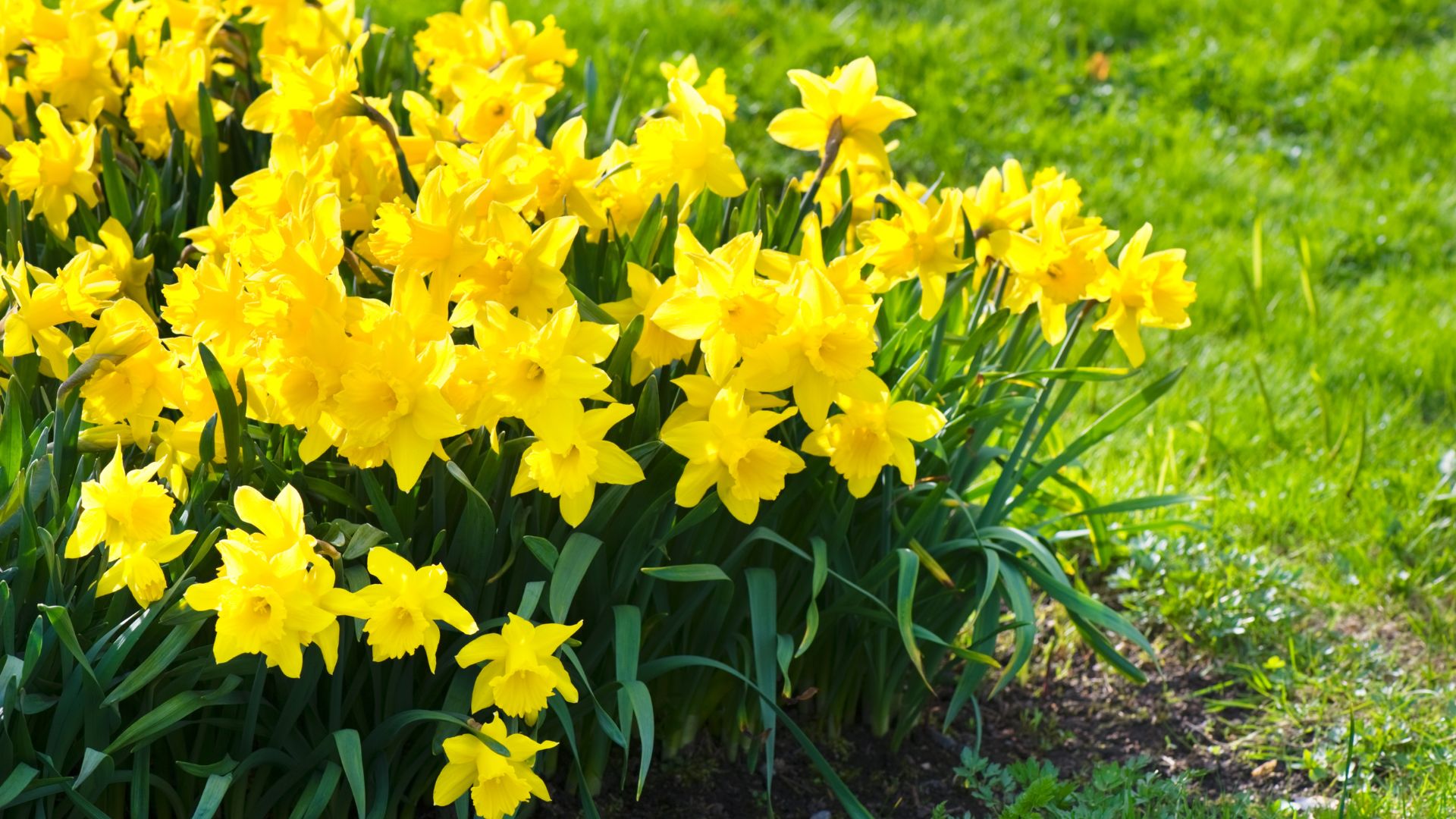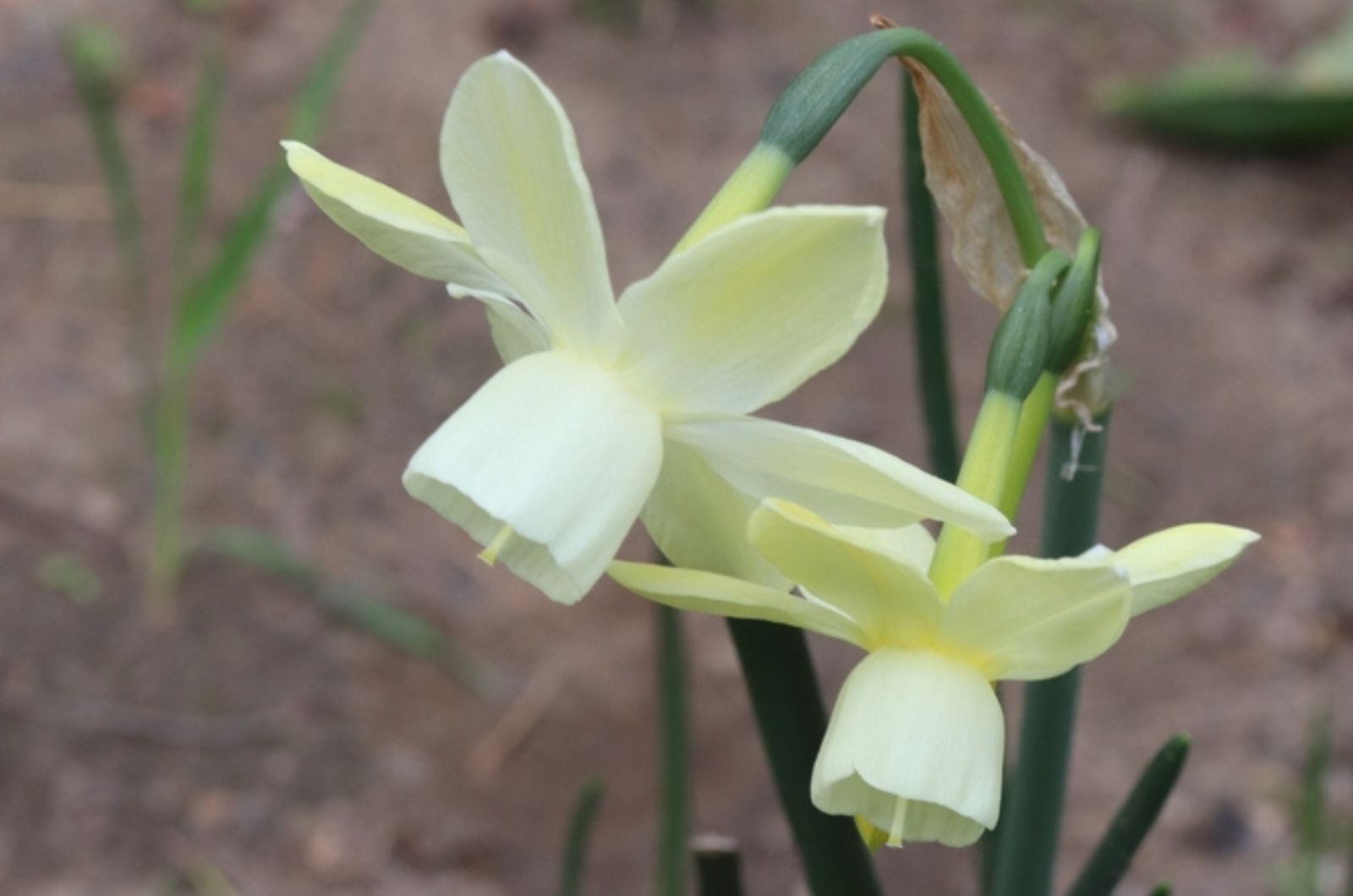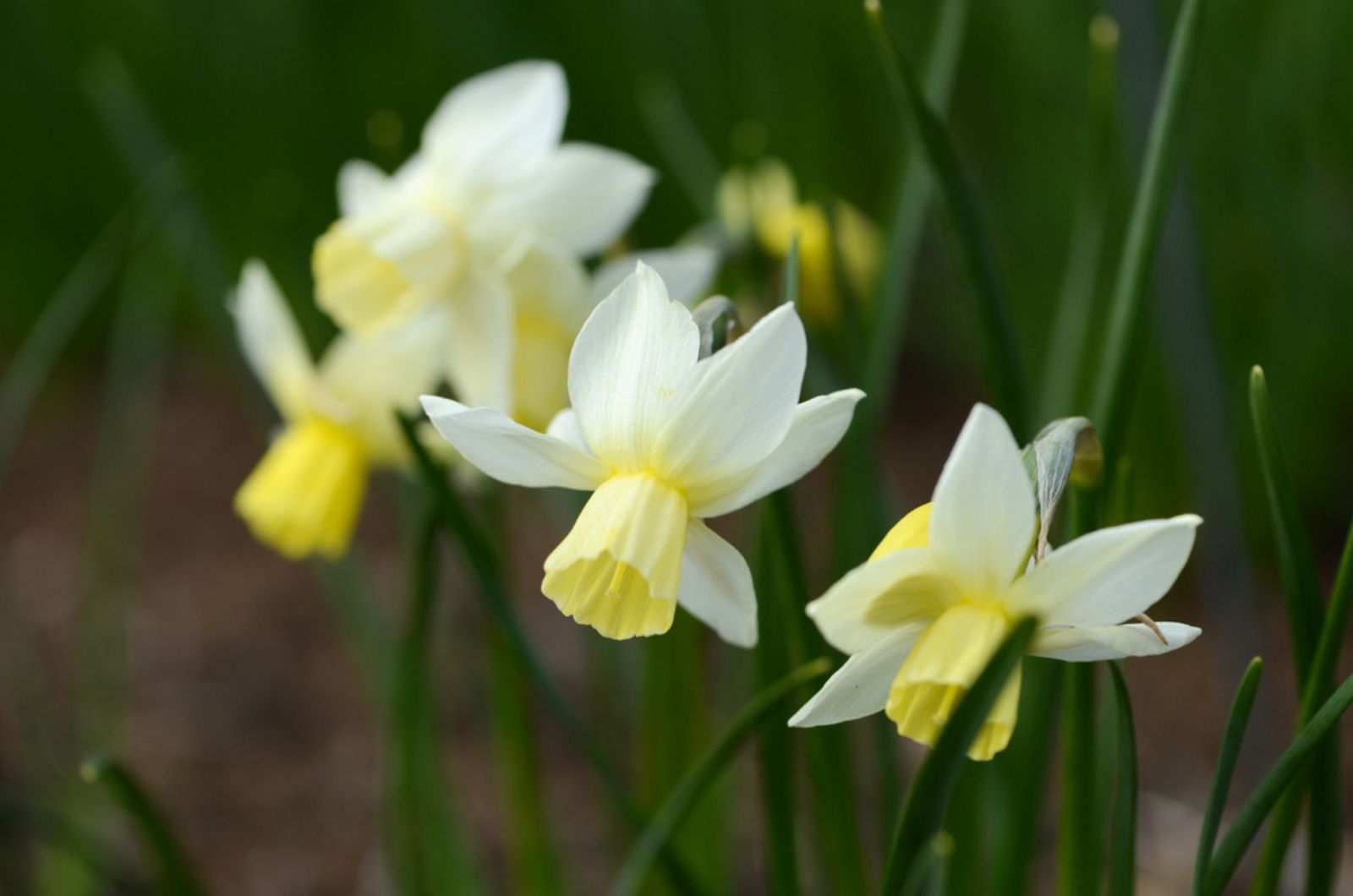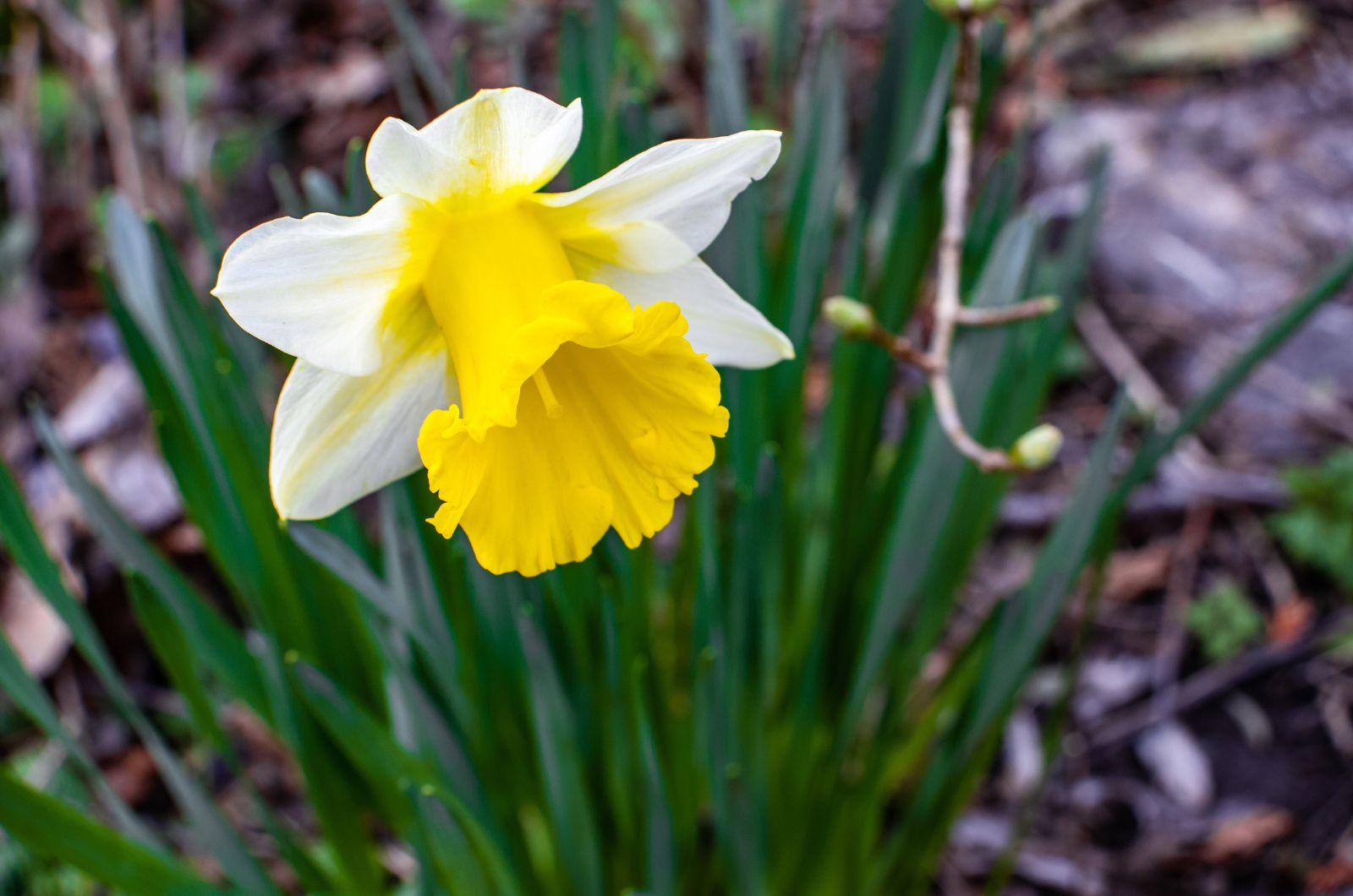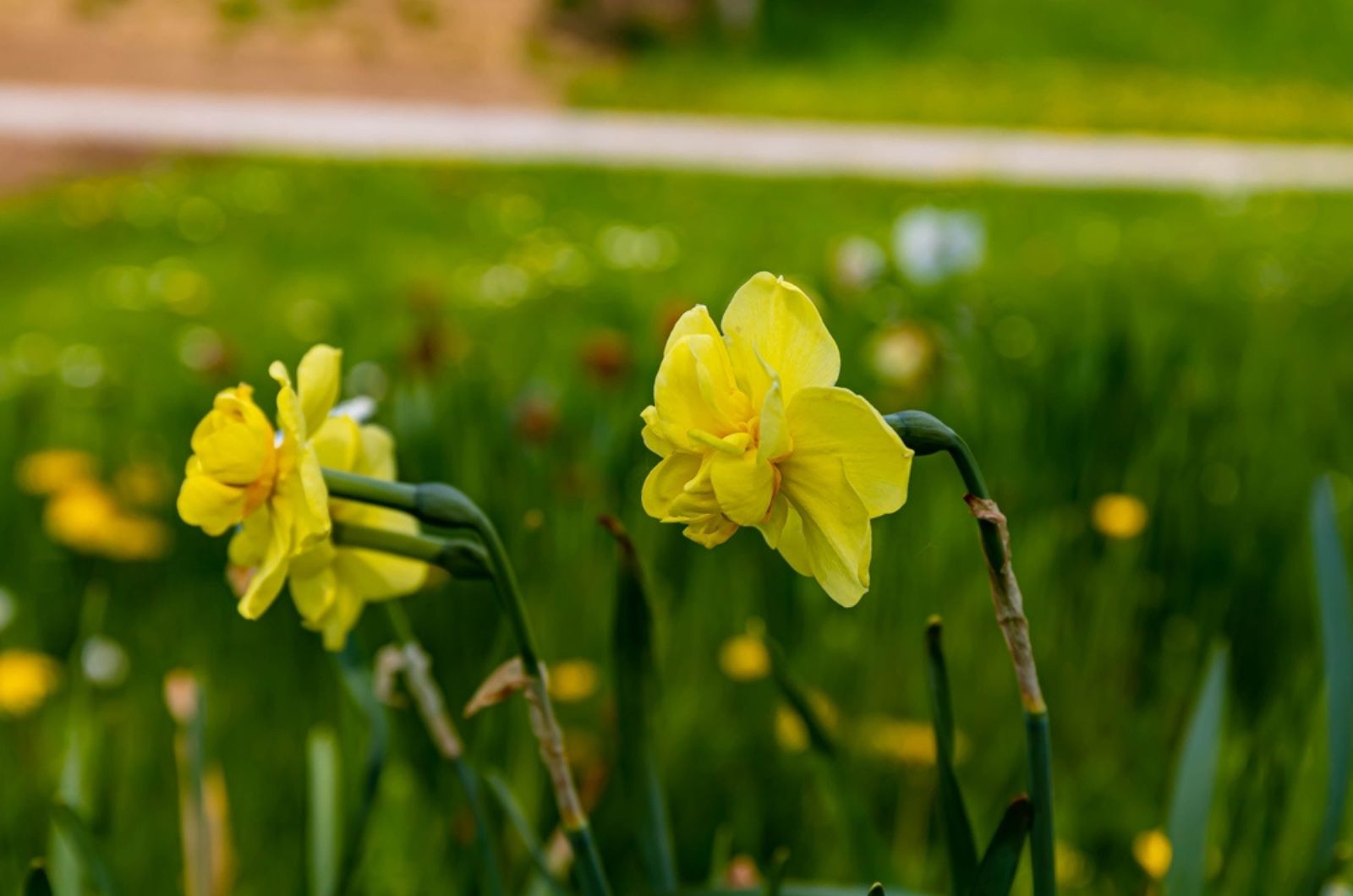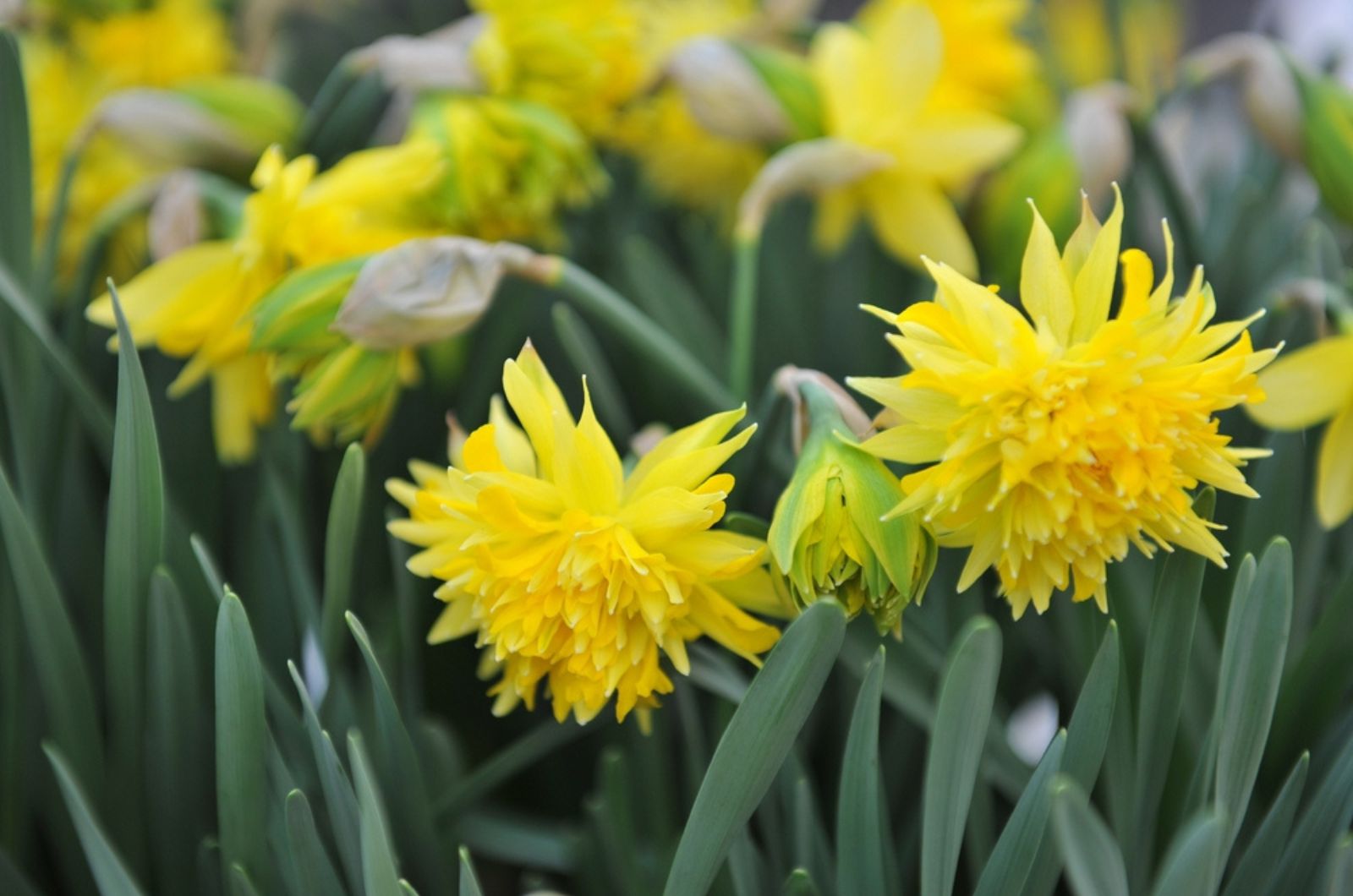Do you want your garden to be filled with blossoms as soon as the spring arrives? It’s simple, plant daffodils right now! These plants really add a special touch of beauty to any outdoor space.
If you don’t have a large garden, then you should plant your daffodils in containers. But I must warn you that not every variety grows well in pots, especially taller varieties.
Don’t worry, I’ll show you some of the best shorter daffodils to plant now for spring and give you some tried-and-true growing tips.
Let’s get started!
1. Narcissus ‘Moonlight Sensation’
Moonlight Sensation is a clump-forming variety and won’t exceed 11 inches. The leaves are grayish-green and pair perfectly with blossoms that are typically 2.5 inches in diameter.
They emerge in bright yellow and fade to creamy white as they mature. You can expect up to 6 blossoms per stem.
These daffodil varieties are perfect for pots and their strong fragrance is just another great thing about them.
If planting your Moonlight Sensation outdoors, you should find a spot in the borders behind other plants. The foliage naturally withers and dies back after blooming but it won’t be as noticeable because it will be hidden by the other plants in front of it.
2. Narcissus ‘Yellow Sailboat’
Daffodils are one of the best spring bulbs to plant in the fall. Some varieties, such as the Yellow Sailboat bloom a little bit later and you can expect to see the blossoms in late April.
This perennial species develops into clumps and typically reaches 11 inches tall, making it more suitable for borders, just like the Moonlight Sensation.
The blossoms of this Narcissus come in light yellow and emit a sweet scent.
For the container garden, choose taller pots and plant only this variety in it to accentuate its beauty and fragrance.
If using this variety in borders, you can mix it with other Narcissus species to extend the season.
3. Narcissus ‘Winter Waltz’
This variety is as enchanting as its name. The leaves are strap-shaped and the blossoms face upwards. Captivating white petals gently sweep back and combine perfectly with apricot-orange caps.
The Winter Waltz daffodil produces blossoms from February through March, so it would be great if you paired it with one of the most popular daffodils, February Gold.
This is another variety you can grow in borders behind some perennials, or you can add it to taller containers.
4. Narcissus ‘More and More’
We definitely want more of this variety! Daffodil More and More is a fantastic variety that reaches approximately 7 inches tall, making it perfect for smaller pots on patios.
You will typically see two bright yellow blossoms on a single stem and they’ll appear in mid-spring.
These plants look perfect in raised beds but if you want to plant them in borders, make sure to pair with other short perennials, such as lavender.
More and More daffodils emit a sweet scent and will make your spring even more pleasant!
5. Narcissus ‘Tête Bouclé’
We’ll end our list with a daffodil whose name is pretty hard to pronounce, Tête Bouclé.
It’s the shortest of the short daffodils and it typically won’t exceed 5 inches. Full double blossoms come in two shades of yellow and their beauty is most accentuated when the plant is grown in pots.
You can plant it directly in the ground but make sure to pair it with low-growing species, such as snowdrops or small herbs.
Daffodil Growing Tips
There are some things you may not know about daffodils, but the one we are all aware of is their easy going nature.
Here’s a short and simple guide on planting and growing shorter daffodil varieties.
1. Plant all varieties somewhere between mid-September and November. This will allow the roots to establish well before the temperatures drop significantly.
2. Make sure the depth of the hole is two times bigger than the bulb. If your soil is too sandy, opt for an even deeper hole.
3. For container planting, pack daffodil bulbs tightly, halfway down the container.
4. Water the bulbs thoroughly.
5. Don’t remove the foliage for approximately 6 weeks after flowering.
6. Garden soil typically meets all daffodil requirements. If you grow them in pots, use peat-free potting compost. Good drainage and lots of water during growing and blooming will give the best results.
Daffodils are a true garden gem and are beloved by all gardeners, including beginners. Shorter varieties look fantastic and will make an excellent addition to your container garden or borders.

